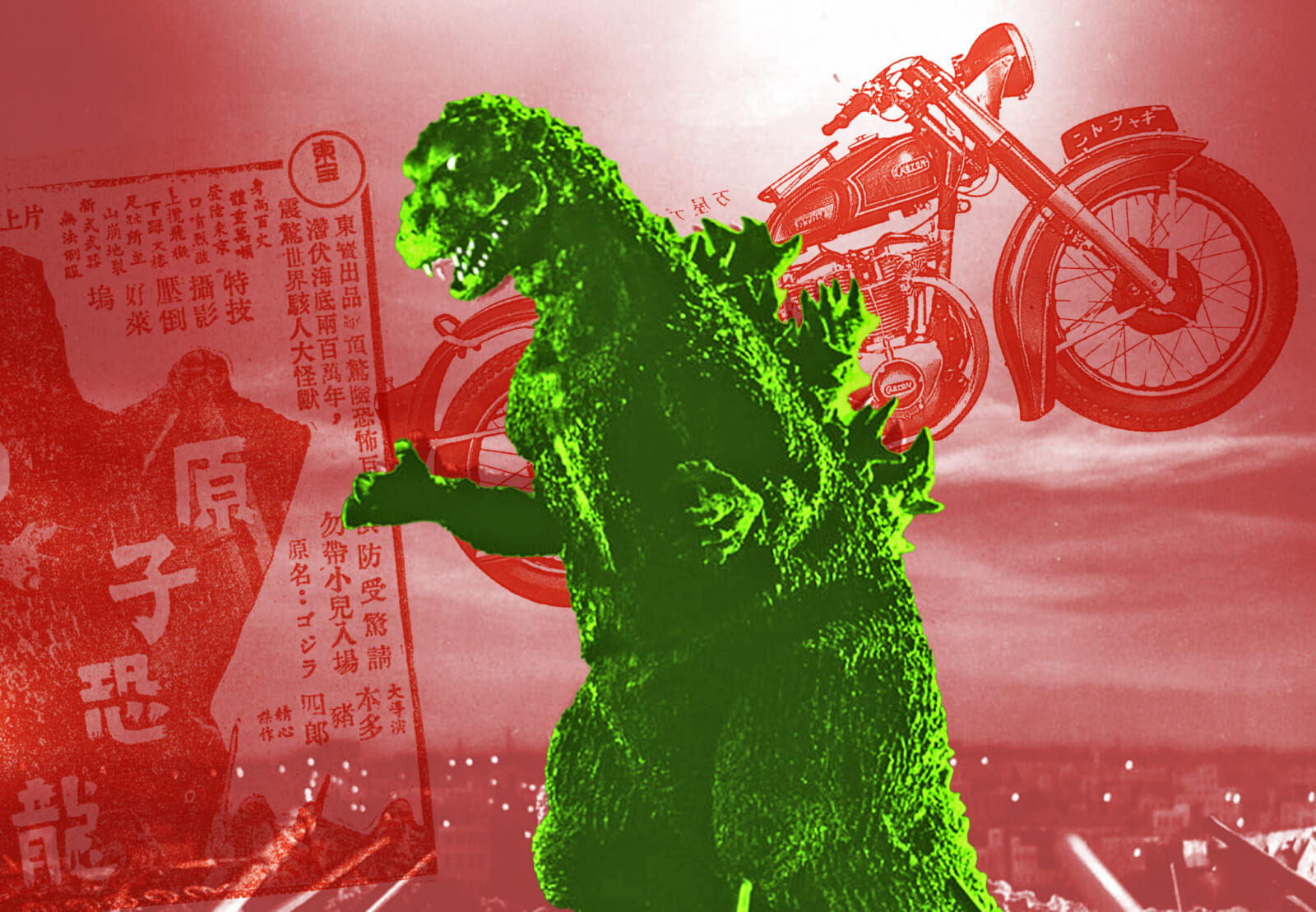godzilla (1954) This film helped create an entire genre of Japanese cinema while popularizing giant monster movies around the world. A dark, haunting parable about the horrors of atomic weapons, the practical implications of which still largely hold true, the first godzilla It was a box office success and (eventually) a critical success, spawning an entire franchise that’s still going strong 70 years later.
Of course, no one could have foreseen this at the time. As Toho’s first foray into monster movies, there was a lot of uncertainty surrounding the film, so the studio went all out with its marketing, often in very surprising ways.
attract children
One of the most memorable moments in the film—one that you can’t forget no matter how hard you try—is the scene of a mother desperately holding her three children while Godzilla burns Tokyo around them. Seeing no escape, she tried to “pacify” the children by saying, “We’ll get to where daddy is soon.”
The Godzilla franchise is undoubtedly more action-oriented these days, but the original should be considered a horror film. Yet even before all the sequels, Toho’s advertising executives knew it would appeal to kids who could suppress all the adult themes and focus on cool giant monsters that smashed buildings to pieces.
In order to expand the audience of the film, Toho’s advertising department produced children’s materials such as picture books, placards, and color posters and sent them to the audience. Directly to primary and secondary schools across the country.
In the cinema, children enjoy large cutouts, papier-mâché models and balloons with the portrait of the King of Monsters. These won’t mean much to adults, but they spark the imagination of children, who will become a key demographic for the series.
It is for their consideration that the sequel Godzilla strikes again (1955), another monster was added: Anguirus (double monster mayhem). His battle with Godzilla is based on a professional wrestling match.
Even later, the studio began capitalizing on revenue from the film series through the Toho Champion Film Festival, which brought films back to theaters during school holidays.
These reruns were often re-edited to reduce storyline and increase action, paving the way for the modern action incarnation of the series, which began with the marketing decisions surrounding the first installment Godzilla.

Outstanding product placement
Product placement in movies was nothing new at the time godzilla Introduced in 1954. This practice may actually have begun as early as 1896. but feel Wrong Imagine product placement godzilla Because this movie is a work of allegorical art.
Of course, nothing as vulgar as product placement has a place in it. Godzilla? What can you promote in a movie about the fiery apocalypse of Japan’s capital city? Homeowners insurance? As it turns out, the answer is motorcycles.
promotion Godzilla, Toho formed a short-lived partnership with Cabton Motorcycles. If you don’t recognize the name, that’s because the company went bankrupt in the early 1960s. By 1954, however, they were everywhere, with their bikes appearing in promotions godzilla Despite only being in the movie for about 30 seconds, there is a poster.
Hideto Ogata, played by Akira Takarada, rides a Capton bike to visit reclusive scientist Serizawa in search of a way to kill Godzilla. Once you know that this scene was filmed as product placement, it’s hard not to notice that there’s something a little off about it.
Showing how the British arrive at the lab is completely unnecessary and disrupts the flow of the film, especially when the camera is fixed on the bike from an awkward angle, all to show off the name Capton on the side of the machine .
Godzilla loves sweets
In the months leading up to launch godzilla In 1954, the Morinaga Confectionery Company, which sponsored in-car posters for the film, held a side event for its Morinaga Dulce de leche in which people could enter a lottery to win an invitation to a preview of the film.
When today you can get Godzilla cookies, candy, hot sauce, and energy drinks, business decisions like this shouldn’t surprise anyone. But 70 years ago, when the film was at its core a simple parable about nuclear weapons, Caramel’s prominence behind the scenes felt a bit odd.
It’s easy to think of godzilla Success depends solely on the power of story, but as we just saw, the truth is much more complex.


 Anal Beads
Anal Beads Anal Vibrators
Anal Vibrators Butt Plugs
Butt Plugs Prostate Massagers
Prostate Massagers
 Alien Dildos
Alien Dildos Realistic Dildos
Realistic Dildos
 Kegel Exercisers & Balls
Kegel Exercisers & Balls Classic Vibrating Eggs
Classic Vibrating Eggs Remote Vibrating Eggs
Remote Vibrating Eggs Vibrating Bullets
Vibrating Bullets
 Bullet Vibrators
Bullet Vibrators Classic Vibrators
Classic Vibrators Clitoral Vibrators
Clitoral Vibrators G-Spot Vibrators
G-Spot Vibrators Massage Wand Vibrators
Massage Wand Vibrators Rabbit Vibrators
Rabbit Vibrators Remote Vibrators
Remote Vibrators
 Pocket Stroker & Pussy Masturbators
Pocket Stroker & Pussy Masturbators Vibrating Masturbators
Vibrating Masturbators
 Cock Rings
Cock Rings Penis Pumps
Penis Pumps
 Wearable Vibrators
Wearable Vibrators Blindfolds, Masks & Gags
Blindfolds, Masks & Gags Bondage Kits
Bondage Kits Bondage Wear & Fetish Clothing
Bondage Wear & Fetish Clothing Restraints & Handcuffs
Restraints & Handcuffs Sex Swings
Sex Swings Ticklers, Paddles & Whips
Ticklers, Paddles & Whips



















